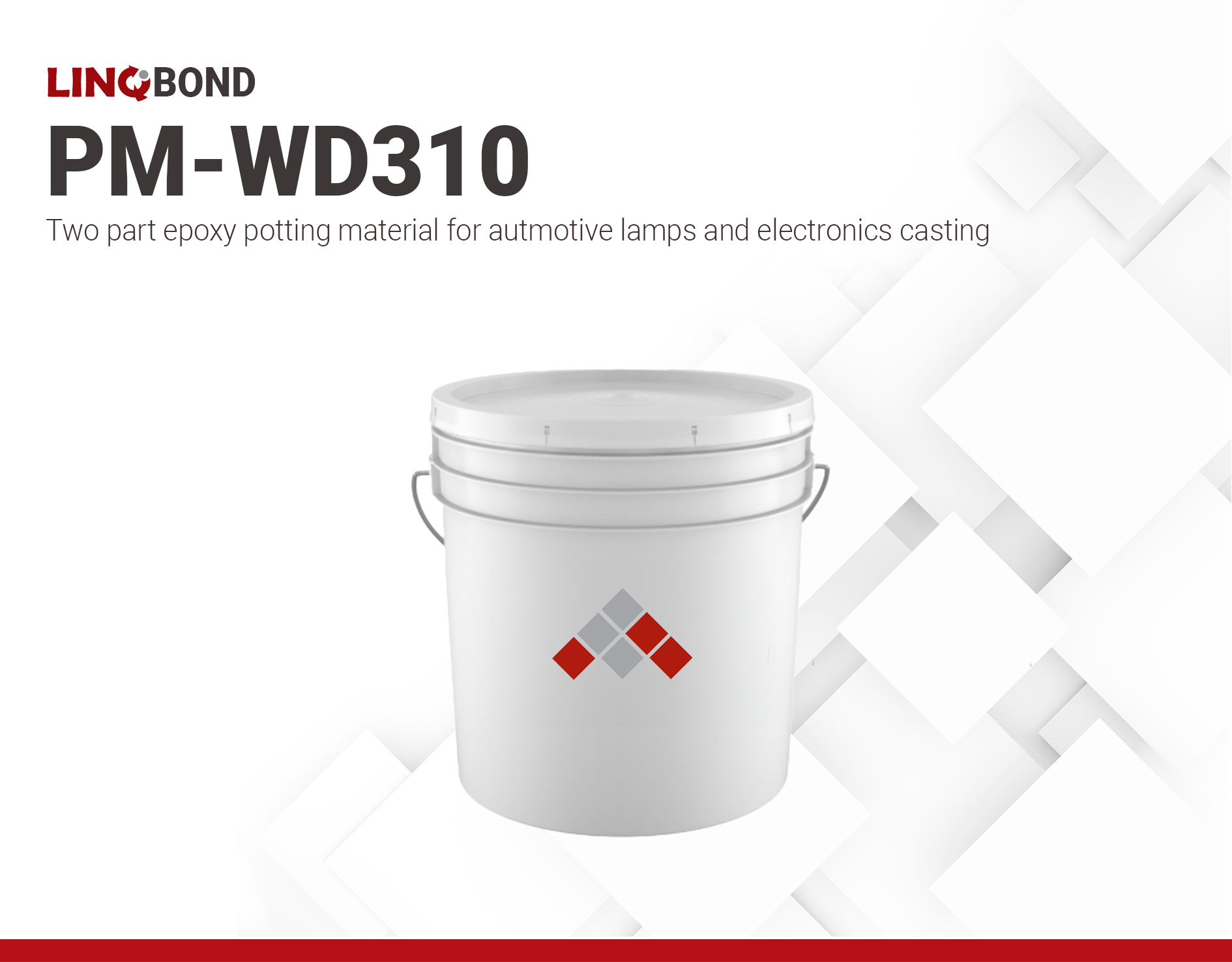LINQBOND PM-WD310 | Two part epoxy potting material
Main features
- Good moisture resistance
- Excellent thermal shock resistance
- Low outgassing
Product Description
LINQBOND PM-WD310 is a two-component epoxy for auto lamp and electronic device casting. LINQBOND PM-WD310 exhibits outstanding stability when subjected to various environmental tests, including resistance to moisture, chemicals, and other harsh conditions.
LINQBOND PM-WD310 ensures long-term performance and reliability in diverse settings, making it an excellent choice for applications requiring robust, reliable, and high-performance epoxy solutions, particularly in the automotive and electronics industries.
Cure schedules
- 7 days at 25°C
- 1 hr at 80°C
Technical Specifications
| General Properties | |||||
| Appearance Appearance Appearance at room temperature. | Black | ||||
| Mix Ratio Mix Ratio The amount of a constituent divided by the total amount of all other constituents in a mixture | 2:1 | ||||
| Specific Gravity Specific Gravity Specific gravity (SG) is the ratio of the density of a substance to the density of a reference substance; equivalently, it is the ratio of the mass of a substance to the mass of a reference substance for the same given volume. For liquids, the reference substance is almost always water (1), while for gases, it is air (1.18) at room temperature. Specific gravity is unitless. | 1.165 | ||||
| Physical Properties | |||||
| Viscosity Viscosity Viscosity is a measurement of a fluid’s resistance to flow. Viscosity is commonly measured in centiPoise (cP). One cP is defined as the viscosity of water and all other viscosities are derived from this base. MPa is another common unit with a 1:1 conversion to cP. A product like honey would have a much higher viscosity -around 10,000 cPs- compared to water. As a result, honey would flow much slower out of a tipped glass than water would. The viscosity of a material can be decreased with an increase in temperature in order to better suit an application | 4400-6600 mPa.s | ||||
| Chemical Properties | |||||
| Water Absorption | 0.41 % | ||||
| Mechanical Properties | |||||
| |||||
| Elongation Elongation Elongation is the process of lengthening something. It is a percentage that measures the initial, unstressed, length compared to the length of the material right before it breaks. It is commonly referred to as Ultimate Elongation or Tensile Elongation at break. | 5 % | ||||
| |||||
| Electrical Properties | |||||
| Surface Resistivity | 500000000000000 Ohms/sq | ||||
| Volume Resistivity Volume Resistivity Volume resistivity, also called volume resistance, bulk resistance or bulk resistivity is a thickness dependent measurement of the resistivity of a material perpendicular to the plane of the surface. | 5.0x1015 Ohms⋅cm | ||||
| Thermal Properties | |||||
| |||||
| Degradation temperature Degradation temperature The temperature at which the materials start losing their properties | 280 °C | ||||
| Glass Transition Temperature (Tg) Glass Transition Temperature (Tg) The glass transition temperature for organic adhesives is a temperature region where the polymers change from glassy and brittle to soft and rubbery. Increasing the temperature further continues the softening process as the viscosity drops too. Temperatures between the glass transition temperature and below the decomposition point of the adhesive are the best region for bonding. The glass-transition temperature Tg of a material characterizes the range of temperatures over which this glass transition occurs. | 51 °C | ||||
| Thermal Conductivity Thermal Conductivity Thermal conductivity describes the ability of a material to conduct heat. It is required by power packages in order to dissipate heat and maintain stable electrical performance. Thermal conductivity units are [W/(m K)] in the SI system and [Btu/(hr ft °F)] in the Imperial system. | 0.3 W/m.K | ||||



